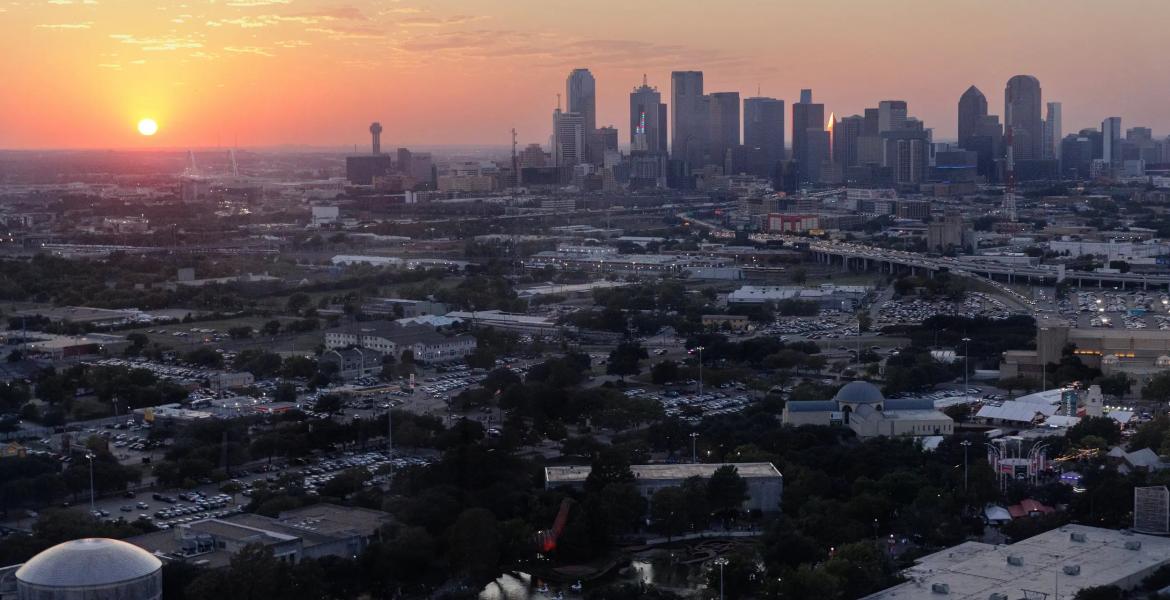AUSTIN, TX -- Here's what you need to know about Hurricane Harvey
By Cassandra Pollock, The Texas Tribune
August 24, 2017
As Hurricane Harvey barrels toward the Texas coast, Texans are bracing for extreme flooding and potential damage to their communities. Harvey is currently a Category 2 hurricane, with winds around 100 miles per hour — but it could become nearly a Category 4 hurricane, with winds of 125 miles per hour, by the time it makes landfall this weekend. Some projections expect 15-25 inches of rain in areas along the coast.
A hurricane hasn't hit Texas soil since 2008, and the coastal region's surging population and booming oil industry — coupled with past weather events — are raising concerns that the state is unprepared. Here's what you need to know:
What's happened so far
Gov. Greg Abbott has declared a state of disaster for 30 Texas counties and has directed the Texas Department of Public Safety's State Operations Center to up its readiness level before Harvey hits. Abbott has also announced he's getting briefed on the hurricane at the center on Friday morning.
Some Texans along the coast have been asked to move inland or seek higher ground ahead of this weekend; on South Padre Island, people are loading up on water and filling sandbags to protect vulnerable homes and businesses.
The city of Port Aransas issued a mandatory evacuation Thursday, and so did Calhoun County — a strip of land along the coast that more than 20,000 people call home. Brazoria County, which has a population of around 340,000 residents, has ordered a mandatory evacuation as well — but only for people living on the Gulf side of the Intracoastal Canal. Matagorda County, another county along the coast, has issued a mandatory evacuation for its 36,000 residents. The cities of Galveston and Corpus Christi called for voluntary evacuations Thursday afternoon.
As of Thursday afternoon, the U.S. Border Patrol said it is not planning to close its roadside immigration checkpoints north of the Rio Grande Valley unless there is a danger to travelers or its agents.
Texas A&M; University-Corpus Christi issued one of its own on Wednesday, and the University of Houston has announced it's closing campus for the weekend. School districts in Houston are considering canceling the first day of classes Monday, and New Braunfels ISD just announced it was delaying its first day of school due to Harvey.
Some are already comparing Harvey to Allison, a 2001 tropical storm whose heavy and prolonged rainfall made for one of the most expensive and deadly weather events in recent Southeast Texas history.
Is the Texas coast ready?
The Texas Tribune and ProPublica asked this same question for a major investigative project last year — and found some uncomfortable answers. Houston, the largest city in the state, is seriously ill-prepared.
If a hurricane hits the thousands of storage tanks — ones that hold the world's largest concentrations of oil, gases and chemicals — that line the Houston Ship Channel just right, more than 25 feet of water could shoot up the channel. And if even one tank ruptured because of it, hundreds of thousands of people could be impacted.
When Hurricane Katrina made landfall in 2005, gushing floods caused one Houston Ship Channel refinery’s oil tank to rupture — and sent oil into more than 1,700 homes a mile away. The Houston area has schools and neighborhoods that are less than a mile from large refineries and oil storage terminals.
On top of those Ship Channel fears, unchecked development has continued in Houston, creating economic success for some — but upping the flood risk for everyone.
Texas Land Commissioner George P. Bush asked local and state leaders in June to urge the Trump administration to fund a coastal barrier system for Texas. Protecting the state’s coast was his agency’s no. 1 priority this year, he said, adding, “We are just as vulnerable to a major storm today as we were in 2008 — and that’s bad news.”
With voluntary evacuations beginning, traffic could be a nightmare
Southeast Texas' booming population, paired with mandatory evacuations, could bring the state back to the Hurricane Rita and Ike days, when traffic jams filled some of Texas' busiest highways as people sought safer ground. It's possible that another traffic nightmare could precede what's in store this weekend, especially as people along the coast head up to Dallas, Austin or San Antonio.
As of Thursday afternoon, the Texas Department of Transportation said it hadn't yet turned some highways in the state into one-way roads to speed evacuations. The agency will only do so once there are mandatory evacuations.
“The time to leave is during voluntary evacuations because once it becomes mandatory, there’s going to be a lot of traffic,” said TxDOT spokeswoman Veronica Beyer. “If it does get to the point where we are having mandatory evacuations and we have to implement contraflow, it is going to take a good length of time.”
Officials were encouraging people to fill up gas tanks in case local officials began mandatory clearings. The transportation agency plans to end all ferry service to and from Port Aransas on Friday morning.
“You’ve got until tomorrow late morning to use the ferries,” Beyer said.
How Texans are reacting so far
Some of you have shared your experience with past hurricanes and tropical storms on Twitter. @cottagelmagin said, "I remember Alicia... no power for 2 weeks, massive tree cleanup and miserable humidity." Another user, @Comeonpurpletx, said, "Alicia destroyed my house; Ike flooded family's; worried about flooding here in Clear Lake w/ Harvey." @TheMermaidAg: "Ike hit 2 weeks into my freshman year at A&M; Galveston. We evacuated and spent the semester in College Station during recovery." And state Sen. Konni Burton, R-Colleyville, weighed in, too: "I remember 1 hurricane when we opened the school gym 4 pple to stay in. My dad was principal & the school was all there was."
Tweet us your experiences and tell us how you're preparing for Harvey this weekend with #MyTexasTake. Stay safe this weekend.
Take this information with you into the weekend
The Corpus Christi Caller-Times will have live coverage as the storm progresses.
Follow the National Weather Service on Twitter; it has accounts specifically for Austin and San Antonio, Corpus Christi and another for the Houston and Galveston areas.
Also follow the National Hurricane Center; it will be publishing new audio podcasts to their site with each new advisory for the storm.
The Texas Department of Public Safety has situation reports ahead of Harvey hitting land and will be updating them here.
The Weather Channel has a list of tips on how to stay safe, and so does the U.S. Energy Department. If you need to know what to do if your car gets caught in a flood this weekend, read more here.
How to prepare for Hurricane Harvey — whether you evacuate or not
Brandon Formby and Shannon Najmabadi contributed to this report.
This article originally appeared in The Texas Tribune at https://www.texastribune.org/2017/0….
The Texas Tribune is a nonprofit, nonpartisan media organization that informs Texans — and engages with them — about public policy, politics, government and statewide issues.
Subscribe to the LIVE! Daily
Required






Post a comment to this article here: